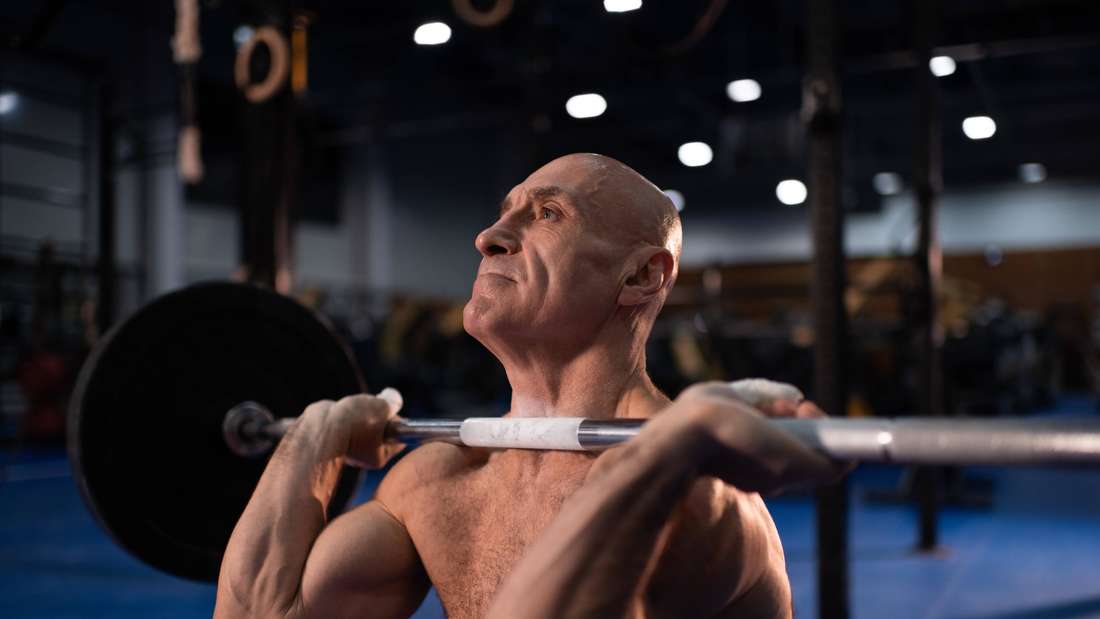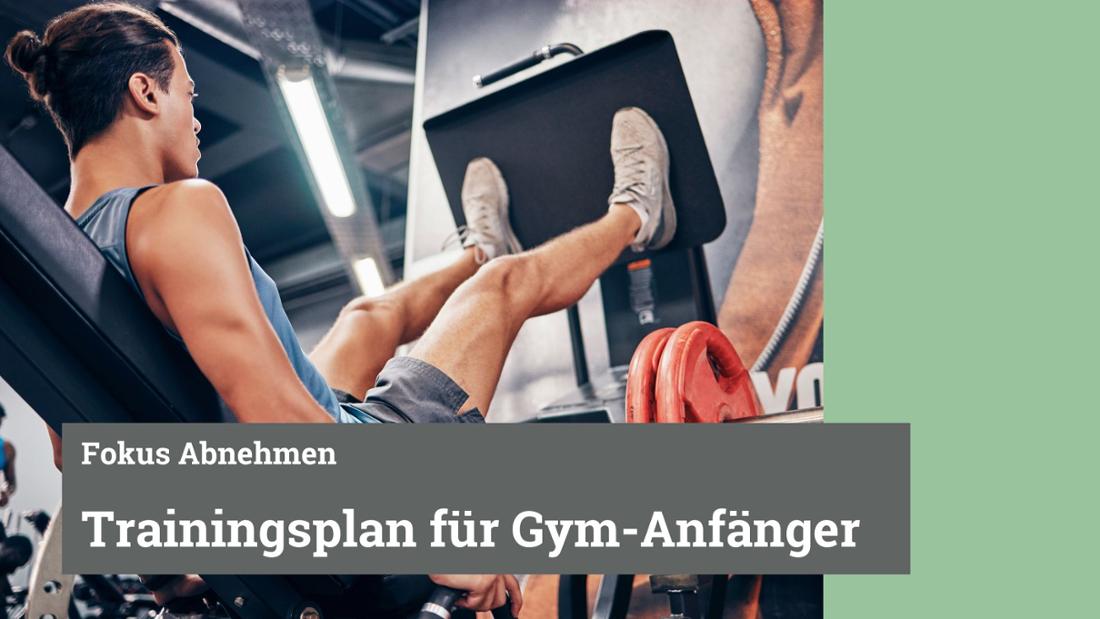
These exercises should be avoided when doing strength training over 40
Press

There are certain strength exercises that people over 40 should avoid when training to build muscle in order to prevent typical injuries and train effectively. A sports scientist gives tips on what you should look out for.
In general, when it comes to muscle building training and the right choice of exercises, it is not a question of how old you are, but of your individual fitness and health. That is why it is basically possible to train like a younger person even at an advanced age if you take a little more time for regeneration. However, due to aging, people over 40 are more likely to suffer from certain illnesses and complaints than people in their mid-twenties. Sports scientist Prof. Dr. Jürgen Gießing from the Technical University of Kaiserslautern-Landau explains which exercises are less suitable for high blood pressure, joint pain, etc.
Check-up with the doctor before muscle building training
As you get older, the likelihood of feeling aches, pains or tensions in your body increases. But you can also develop illnesses that you don’t even notice at first. Both play an important role in how you should structure your training. That’s why Prof. Dr. Jürgen Gießing’s top motto is: “Before you start a training program, you should get a medical check-up. There are a few things that happen quite often. High blood pressure in particular often goes undetected.”
Other common symptoms such as dizziness or headaches can indicate anything from sensitivity to the weather to serious illnesses. These also need to be clarified.
Avoid forced breathing during strength training
Especially for older people and people with high blood pressure (but in principle for everyone), the following applies when doing strength training: no forced breathing! This puts additional pressure on the heart and vascular system. But what exactly does forced breathing mean? “There are often misunderstandings here,” explains Gießing. “In strength training, you’re supposed to breathe out when you’re pushing!” If you’re doing push-ups or bench presses, for example, you should breathe out during the exertion, not when you’re pushing. Gießing’s tip: “Breathe calmly so that you can hear it. Because when I hear the flow of breath, I know it’s not forced breathing.” Forced breathing doesn’t mean that you breathe when you’re pushing, but that you don’t breathe enough and keep too much air in your abdomen and chest. “And that’s exactly what you have to avoid, because at that moment your blood pressure shoots up and the blood flow to the heart is suppressed,” says Prof. Dr. Gießing.
Also not recommended for people with high blood pressure: strength exercises in which the head is lower than the body’s center of gravity – for example handstand push-ups and sit-ups or bench presses on the negative incline bench.
Strength training for beginners: Free training plan PDF
Are you new to the gym and want a structured plan to get started with strength training? Then download our training plan for gym beginners for free HERE.

Building muscle over 40: joints often a weak point
As we get older, our joints also become weak points, which can make weight-lifting to build muscle painful. Common causes of chronic joint pain are poor posture, excessive strain or lack of exercise. “People over 40 often have impingement in the hip or shoulder joint,” says Gießing.
In an impingement, soft tissues such as tendons or parts of the capsule become trapped in the narrowed joint space, which is extremely painful and can lead to inflammation. “This is often due to inactivity, because the tendon does not have enough space and rubs against the bone and becomes inflamed. If you have an acute inflamed impingement, you should not do certain exercises – namely those that trigger the pain.” These are often exercises that put the shoulder joint in extreme positions, such as dips on a bench, neck presses or lat pulls into the neck.
You have to get through the acute phase first. “There are various measures you can take to get rid of the inflammation, for example with anti-inflammatory medication and stretching exercises.” Shoulder impingement can be improved in the long term with stretching exercises, but sometimes surgery is necessary, says the sports scientist.
Once the acute problem has been resolved and you have regained full functionality, you can do all the exercises. “But that doesn’t mean that you can’t train as long as you have shoulder impingement,” says Gießing. In this case, you can put strain on your biceps, calves or thighs without any problem and continue training. In sports, this is called “training around the injury,” says Gießing. If you are recovering from a shoulder injury, you can do the best exercises for strong gluteal muscles in the meantime, for example.
Muscle building: exercises you should avoid as you get older
Prof. Dr. Jürgen Gießing advises (most) people over 40 to avoid some classic exercises with free weights. “Bench presses, deadlifts and squats with a barbell are considered the king of exercises. People always say that if you can do these exercises well, you’ll benefit a lot from them. And that’s true. But you can only do them effectively if you have great technique,” explains Gießing. However, if someone hasn’t done anything for a long time, isn’t in top muscle shape and then starts doing deadlifts with heavy weights on a barbell, it puts an incredible strain on the spine. “You can do free weight exercises if you’re really fit. But to get there, you should first train on training equipment,” advises Gießing.
According to the sports scientist, guided training on equipment in the gym is particularly recommended for fitness beginners and those returning to exercise. The following way of thinking is less effective: “I’m not fit enough to go to the gym yet. I’ll get myself in shape at home first.” That’s understandable in terms of thinking, but the exact opposite is true, says Gießing. “Especially at the beginning, when I’m out of shape, when I haven’t dealt with the topic of strength training for a long time, then firstly I need good instructions, i.e. a trainer who can check whether I’m doing it right. And secondly I need equipment where I can’t go wrong.”
As an example, he cites modern chest presses, where it is not possible to press at the wrong angle because this is predetermined and the machine is set to your height. “I have to balance a free dumbbell, so you can easily slip into the wrong angle or, in the worst case, the dumbbell can even fall down on your foot or neck,” says Gießing. “When I have built up my muscles with the machine exercise and I am really fit, then I can switch to free weights. But I wouldn’t start with that.”
Read more: The amazing effect of heavy weight training in retirement
Conclusion
Muscle building training is very important for people over 40 to counteract the natural loss of muscle mass. As diseases or complaints of the musculoskeletal system occur more frequently with increasing age, special care must be taken when doing strength training. It is recommended that you have a medical check-up before starting a training program in order to identify possible health risks.
Hypertensive patients in particular should avoid forced breathing during training in order to avoid unnecessarily increasing blood pressure. Exercises that could lead to impingements in the joints should also be avoided. For fitness beginners and those returning to exercise, it is advisable to train with equipment in the gym under supervision before switching to free weights. It is important to master the correct technique in order to avoid injuries.
The further parts of the conversation on muscle building over 40 with Prof. Dr. Jürgen Gießing covered the following topics, among others:
- Why muscle building training over 40 is so important and what is important now
- How to deal with pain
The author is a former competitive athlete, certified ski instructor and fitness trainer (B license).

Ethel Purdy – Medical Blogger & Pharmacist
Bridging the world of wellness and science, Ethel Purdy is a professional voice in healthcare with a passion for sharing knowledge. At 36, she stands at the confluence of medical expertise and the written word, holding a pharmacy degree acquired under the rigorous education systems of Germany and Estonia.
Her pursuit of medicine was fueled by a desire to understand the intricacies of human health and to contribute to the community’s understanding of it. Transitioning seamlessly into the realm of blogging, Ethel has found a platform to demystify complex medical concepts for the everyday reader.
Ethel’s commitment to the world of medicine extends beyond her professional life into a personal commitment to health and wellness. Her hobbies reflect this dedication, often involving research on the latest medical advances, participating in wellness communities, and exploring the vast and varied dimensions of health.
Join Ethel as she distills her pharmaceutical knowledge into accessible wisdom, fostering an environment where science meets lifestyle and everyone is invited to learn. Whether you’re looking for insights into the latest health trends or trustworthy medical advice, Ethel’s blog is your gateway to the nexus of healthcare and daily living.


